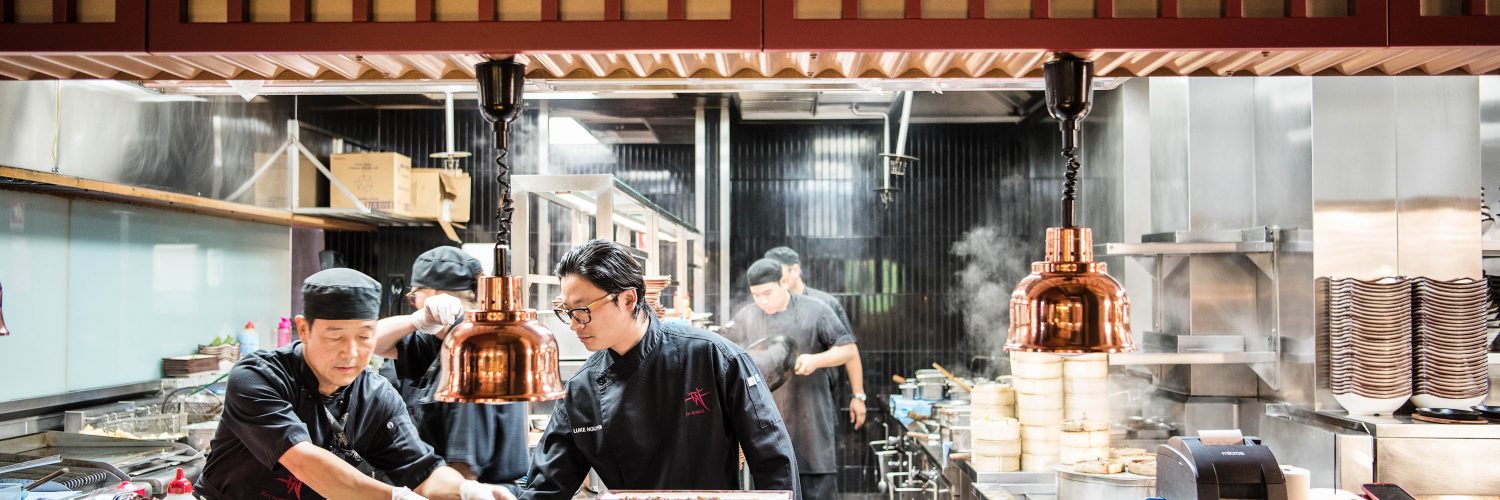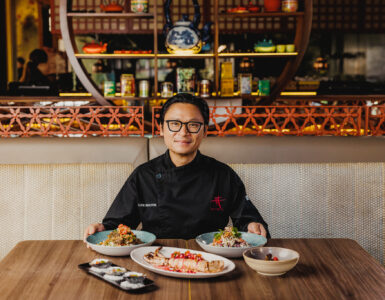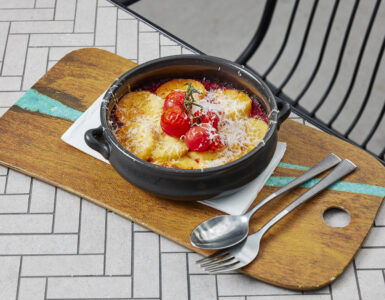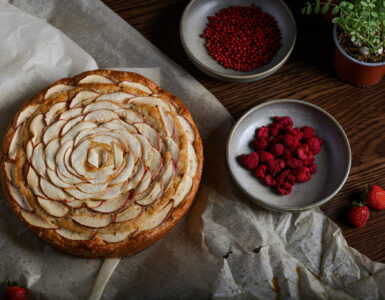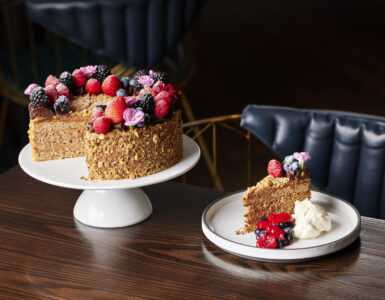From rice-based to egg-based, pan-fried to steamed – there are thousands of different types of noodles. We chatted to Executive Chef of Fat Noodle at Treasury Brisbane and The Star Sydney, Luke Nguyen on the best way to tell your vermicelli from your hokkein, and how to prepare them.
We’ve partnered with delicious on a content series that uncovers the deeper stories behind some of The Star’s signature dining venues. In this piece, Executive Chef of Fat Noodle, Luke Nguyen shares his secrets to recreating your favourite noodle dishes at home.

As we come into winter, there are few better ways to warm up than with a heaping bowl of noodles. Nourishing for the body and the soul, there is a reason the ingredient is a staple across so many cultures and regions including Southeast Asia, where Luke Nguyen spent his formative years before moving to Australia.
“I grew up eating noodles for breakfast, lunch and dinner so noodles, for me, are life,” he says.
As the Executive Chef of Fat Noodle at Treasury Brisbane, Nguyen knows a thing or two about what makes the namesake ingredient so special. At the restaurant, he specialises in Asian-inspired noodles served in many different forms, paying tribute to the ingredient’s longstanding history.
Noodles date back thousands of years to ancient China where they were originally made with a stodgy base of flour and water before being torn into pieces and boiled in stock. But the recipe has been refined quite a bit since then.
Today, there are hundreds if not thousands of different noodle varieties on the market, made in every size, shape and consistency under the sun. But if you’re looking to start with the basics, try one of Nguyen’s go-to styles – rice noodles, vermicelli noodles (also known as rice sticks) or egg noodles.

“My favourite type of noodle to work with would have to be egg noodles as you can prepare them in so many different ways,” says Nguyen. “Each style, shape or texture of egg noodle is designed for certain dishes.”
Made from just flour, water and eggs, egg noodles take on a lovely yellowy-orange hue that increases in vibrancy once cooked. They have a similar texture to pasta and come in all sorts of shapes from thick to thin and round to flat.
At Fat Noodle, you’ll find them used in bak chor mee, a Singaporean Chinese dish topped with meatballs, minced and sliced pork and fragrant mushrooms. For home use, Nguyen recommends using egg noodles in stir-fries, adding them to broths or even deep-frying them to use as a crispy garnish.
“Egg noodles are incredibly textural which is why I love to work with them so much,” says Nguyen.
A stark contrast to egg noodles are white, glutinous rice noodles. They appear in all sorts of dishes, hot and cold, though pho is one of their most common uses. Fat Noodle’s take highlights the star ingredient by pairing it with the restaurant’s signature broth and hearty slices of wagyu.
“Nothing beats soft, silky rice noodles in a steaming bowl of aromatic pho with slow-braised beef brisket that melts in your mouth,” says Nguyen. “Noodles are a great carrier of flavour, so when you combine [them] into slow-cooked stews or noodle soups, the noodles absorb all those rich flavours.”
Rice noodles also work wonderfully in pad thai and pad see ew, two other Fat Noodle specialties. The former is made with tender chicken breast while the latter is vegetarian, made with Chinese broccoli and puffed tofu.
Vermicelli is often mistaken for other rice noodles, but there are a few subtle differences. While vermicelli, often made with rice, particularly in Southeast Asian cuisine, they can also be made from wheat.

Their main characteristic is their long, very thin shape, which works wonderfully in dishes like Fat Noodle’s spicy seafood curry laksa, the perfect hearty dinner as the weather cools down.
For something a little more adventurous, try mixing them with another type of noodle as Nguyen does in his Hokkien-style prawn noodles, made with a double-whammy of vermicelli and a thicker, egg-based variety. Stir-fried to a crisp, the dish is a lovely combination of flavours and textures.
When it comes to making noodles at home, Nguyen has a few tricks up his sleeve sure to assist even the most novice home cook. Tip number one?
“Make sure to never overcook the noodles,” he says. “Some of the more delicate fresh soft rice noodles only need to be blanched for five to 10 seconds.”
If you want to maintain the freshness and daintiness of this variety, try adding them to some homemade rice paper rolls or tossing them in a salad like Fat Noodle’s grilled Angus beef and Vietnamese chimichurri version.
While there’s no right or wrong way to prepare noodles, Nguyen has another foolproof tip to spice up any homemade noodle dish.
“My hack is to always have a jar of homemade or store-bought XO sauce in the fridge,” says Nguyen. “It doesn’t matter which variety of noodle you have or which way you want to eat it. Once you add a tablespoon of XO sauce to it, it instantly elevates the dish.”

If you’re stuck in a noodle rut, Nguyen’s tips are a sure fire way to enhance your favourite dishes. You can also get a taste of his favourite noodle recipes firsthand by visiting Fat Noodle at Treasury Brisbane Tuesday – Saturday, 12pm – 10pm.
This article originally appeared on the delicious. website here.

